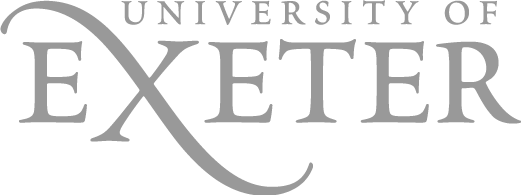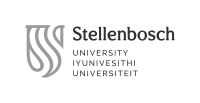S2416 Sustainable Development of Medicine and Health in Venice
Professors
Schedule
Course description
Venetians invented much of what we now think of as modern public health measures and health care. For example, Venice famously adopted the first formal quarantine in 1348 to slow spread of the plague by making visiting ships sit offshore at anchor for 30 days before entering their port. Physicians in Venice developed processes that are now widely practiced as modern medical charts and evidence-based medicine, and Venice established one of the first ministries of health, Magistrato alla Sanità, in the 1400’s. We’ll engage with this rich history through guided- inquiry group activities and a field trip to Scuola Grande di San Marco, which houses a medical museum with canonical texts and early surgical instruments.
Despite this rich history of innovation in medicine and public health, Northern Italy was one of the hardest hit regions of the world at the beginning of the COVID-19 pandemic, which stressed Italy’s excellent nationalized medical infrastructure beyond its capacity. In this course, we’ll examine the critical modern issue of ethical approaches to the development and distribution of medicines and vaccines undergirded by the context of historical Venetian innovation in public health. We will begin with an overview of the history of Venetian medical practice and then move to an evaluation of the molecules of medicine at a molecular level through in-class activities such as one entitled “Organic Molecules and Medicine.” No prior knowledge of chemistry is required, as students will learn the basics of organic structure and stereochemistry through this and other guided-inquiry, team-based activities. Distinction between the two major modes of medicines will be made, with examples: 1. Physiological responses by the body versus 2. killing invading organisms directly. The body’s ability to differentiate between even subtle differences in molecular structure, such as the different actions in the human body of a pair of enantiomers, will be explored, and students will gain a basic understanding of functional groups.
One of the topics that continues to challenge medicine is the evolution of pathogens to evade our existing therapeutics. It is startling to realize that drug-resistant bacteria killed more people in 2019 than malaria or HIV/AIDS. In fact, antibiotic resistant infection is one of the leading causes of death for people of all ages. Another team-based activity will allow students to explore antibiotic resistance together. From there, the principles of modern drug design and structure-activity relationships will be investigated.
Finally, promotion of good health as a cultural facet of Italian life through diet will be explored. Students will learn how to “eat like a local” and be led through an examination of macronutrient and micronutrient structures. For example, we will explore differences between saturated and unsaturated fats at a molecular level, and go on an outing together to visit a local olive oil museum, such as Museum Olio Extra Vergine di Oliva by Oleficio Cisano. Student teams will engage in a final project where they examine the macronutrients, vitamins, and minerals in their favorite local dishes in Venice.
Learning Outcomes
Detailed learning objectives will be distributed by topic during lecture over the course of the semester, and some of these are highlighted here. For the convenience of students, these are divided into Medicine, Technology, Society, and Applications in Venice outcomes, and Foundational Chemistry Concepts and Skills outcomes. Upon completion of this class, a successful student will be able to:
Medicine, Technology, Society, and Applications in Venice
• Skills related to historical understanding of Venetian medical innovations:
- Visit Scuola Grande di San Marco to explore a medical museum and examine canonical texts and early surgical instruments.
- Summarize the historical development of modern public health measures and healthcare in Venice.
- Describe the significance of Venice's early adoption of quarantine, development of medical charts, and establishment of a health ministry.
• Evaluation of modern ethical issues in medicine:
- Analyze the merits of various ethical approaches to the development and distribution of medicines and vaccines.
- Demonstrate the impact of historical Venetian innovations on contemporary issues in global health, especially in the context of the COVID-19 pandemic.
• Promotion of Good Health Through Cultural Practices:
- List the four macronutrients and two types of micronutrients. Describe macronutrient and micronutrient structures and their impact on health.
- Explore the promotion of good health in Italian culture, particularly through diet.
• Engagement with Venetian Health History and Culture:
- Learn to "eat like a local" in Venice, exploring the cultural facets of Italian life through diet. Visit a local olive oil museum to understand the significance of dietary choices in promoting good health.
- Engage in a team-based final project where students examine the macronutrients, vitamins, and minerals in their favorite local dishes in Venice.
- Apply knowledge gained throughout the course to analyze the health implications of specific dietary choices.
Foundational Course Activities and Professional Skills
• Basic chemistry concepts and skills
- Describe atomic structures using sub-atomic particles, including charges and approximate masses of all species.
- Use the structure of the periodic table to relate position on the table to an element’s behavior and reactivity. Describe the differences between the atomic structures of metals and nonmetals.
- Explain what a mole is to someone who has never had a chemistry class.
- Explain what molar mass is and how to determine the molar mass of an element or compound.
- Convert between grams to moles or the reverse. Convert between moles and number of objects or the reverse.
- Fluidly convert between various units of measurement and/or concentrations using conversion factors and molar masses and comfortably use metric prefixes. Readily convert between expressing amounts of matter as numbers of particles, moles, and/or grams.
- Explain what is described in each chemical reaction equation in English words. Balance a chemical reaction equation.
- Convert from Lewis structures to bond-line structures and vice versa.
• Analysis of Molecules of Medicine at a Molecular Level:
- Explore and apply knowledge about the molecular basis of medicines through in- class activities, such as "Organic Molecules and Medicine."
- Compare and contrast the role of physiological responses by the body to direct killing of invading organisms by medicines.
- Discover the body's ability to differentiate between subtle differences in molecular structure, such as distinguishing a pair of enantiomers.
- Investigate the challenges posed by the evolution of pathogens and antibiotic resistance through engaging in team-based activities to explore antibiotic resistance and its impact on public health.
- Examine the principles of modern drug design and evaluate the relationship between the chemical structure of drugs and their biological activity.
• Communication, problem solving, and critical thinking skills:
- Participate in productive discussions with a diverse team of peers in activities to explore broad topics in sustainable medicine and health in Venice and the world.
- Develop critical thinking skills through inquiry-guided, team-based activities.
- Research and write a 3-page paper on a unique, narrow aspect of the team's chosen topic. Participate in peer review processes for draft papers to enhance writing and research skills.
Grading
Points for the homework, class activities, peer feedback, a final individual paper, and a final group project & presentation will be used to calculate your final score as shown:
Homework 75 pts
Class Activities 100 pts
Peer Feedback (on papers & presentations) 50 pts
Final Individual Paper 100 pts
Team Final Project Presentation 75 pts
Total 400 points
Homework
Reading assignments: To solidify your understanding of the material, you should read the assigned passages each week which will be posted to Moodle. There will be a maximum of 30 pages of required reading per week selected from the sources listed below in addition to other scholarly works and current events in the news.
The homework score consists of completion of the required readings and posting to the course message board in response to prompts (50 word min – 100 word maximum) and completing class activity pre-work when it is assigned.
Class Activities
Class meetings will provide an opportunity for you to build your knowledge through guided inquiry activities, discussions, and problem solving in groups. You will be assigned to a team and will work with that team throughout the semester. It is not possible to make up group work that is unexpectedly missed; instead, to reasonably account for minor personal illness or other unforeseen events causing absence, your lowest three class activity scores will be dropped prior to the average calculation for this portion of the grade. In addition, one optional remote assignment will be made available near the end of the term can replace one of the classes if you miss more than three times. The basic expectation is that you will attend every class, arrive on time, and to be an active participant. In the rare event that you arrive so late or leave so early that you do not contribute sufficiently to your group’s effort, the instructor has the right to count the day as an absence; tardiness will be reflected in your participation score.
Individual Research Paper & Team Final Project
More detailed guidelines for the research papers and team final project will be provided during class. The objectives of these assignments are:
1) to encourage you to learn more about the chemistry of medicine and health related to a specific topic that interests you through research, writing, discussion with peers, and presenting.
2) to allow you to learn more about your group’s topic of interest by reading, responding to, and reviewing your peers’ essays.
3) to allow you to learn more about a wide range of topics by viewing and responding to the presentations of other groups.
The final project in the course consists of five phases.
1. Selection of team topic related to both Venice and the chemistry of medicine and health.
2. Division of topic into sub-topics (sections) to be researched and written up as individual project papers.
3. Your individual evaluation (feedback on strength, insights, and improvements) of the paper first drafts written by your group members.
4. Synthesis of individual sections into a cohesive final group project presentation video (narrated powerpoint).
5. Your individual evaluation (feedback on strength, insights, and improvements) of contributions of your group members to your team’s effort.
6. Providing peer evaluations of every presentation given on the days your group is not
presenting.
Readings
A detailed calendar with a schedule of class activities and readings will be distributed on the first day of class. There is no required textbook for the course. Instead, all reading materials and reading assignments (up to 30 pages per week) will be posted on the course’s Moodle website at least one week prior to the class discussion date. Examples of such readings include:
Bartolini, Donatella. “Surgeons and their activity in the Venetian State (1540-1640).” Medical History, 59, no. 1 (2015): 83-100.
Excerpts from: Bamji, Alexandra. “Medical care in early modern Venice.” J. Soc. Hist. 49, no. 3 (2016): 483-509.
In addition to scholarly papers from academic journals and current events articles related to the chemistry of medicine and health, select passages to be read will be drawn from the following texts:
Platina (Bartolomeo Sacchi) translated by Milham, Mary Ella in Platina, On right pleasure and good health: a critical edition and translation of De honesta voluptate et valetudine. Cambridge: Pegasus, 1999.
Steinbock, Bonnie, Alex John London, and John Arras. Ethical Issues in Modern Medicine: Contemporary Readings in Bioethics. 8th ed. New York: McGraw-Hill, 2012.
Stevens Crawshaw, Jane L. Plague Hospitals: Public Health for the City in Early Modern Venice.
New York: Routledge, 2016.
Small, Meredith F. Inventing the World: Venice and the Transformation of Western Civilization.
London, Pegasus, 2020.
Last update: January 22, 2024


















